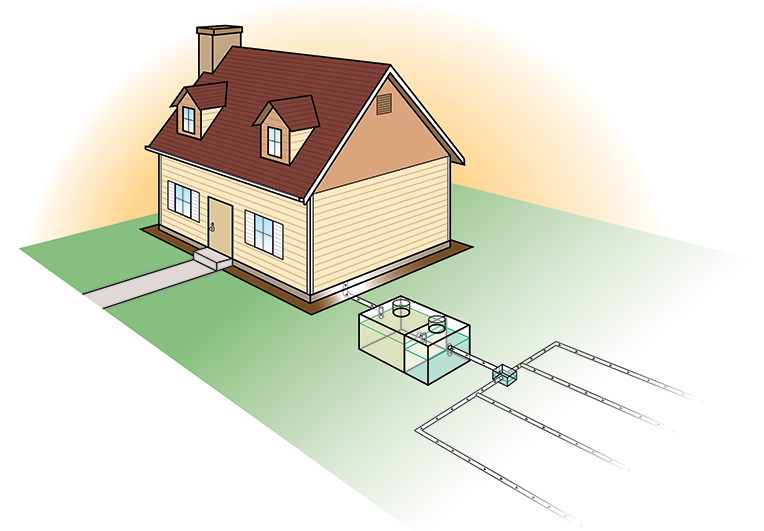At-Home Septic System Testing

What Is a Septic System?
Septic systems are underground, onsite wastewater structures specifically designed to treat biological human waste when access to a centralized sewer system impractical. Septic systems are usually comprised of a main drainage pipe, a holding tank, a “drainfield” and ground soil. Through the various stages, septic systems allow human waste to be naturally broken down by bacteria, and then safely released into the environment.
According to the U.S. Environmental Protection Agency (EPA), 25% of American households utilize septic systems—either individual or small community systems—to treat their wastewater.
A home’s septic system handles all wastewater from the household’s plumbing—which means everything from the obvious to bathwater and laundry output is processed by the septic system. While the system can safely handle some soaps and detergents, make sure that you use phosphate-free products. Phosphates promote algae growth –effectively acting as fertilizer—which can block pipes and cause problems. It is also vitally important that you never flush harsh chemicals or non-biodegradable items such as paper towels, tampons or diapers down the toilet. It is also important to keep kitchen scraps out of the equation, even if you have a garbage disposal in your sink. Instead, consider starting a compost pile to combat food waste, or resign these items to the trash.
Does Your Home Have a Septic System?
If you’re unsure as to whether or not your home has a septic system, there are few ways to find out. Poll your neighbors. If they have a septic tank, chances are you do as well. Rural homes that aren’t connected to city water—meaning you use well water—usually will have a septic system. Another tell-tale sign: your bills. Check to see if there is a $0.00 charge for sewer services on your water or property tax bill. If so, that usually means you have a septic system and therefore don’t need to pay for sewer fees.
After you determine that your home has a septic system, you may be wondering where it is located. As stated, these systems are built underground so look for lids or manhole covers in your yard. You can also consult your house’s “as built” blueprints, if you have access to these drawings. If you are still stumped, contact a plumber, or inspector to locate it for you.
Signs of System Failure
It is important to regularly monitor and maintain your septic system. This saves you money, keeps your environment (and in turn, your family) healthy and protects your home’s property value. Call in a professional inspector if you experience any of the following:
- Foul odor near the septic tank or around the drainfield
- Water backing up in household drains
- Soiled, pooling water in your basement or around your septic system
At-Home’s Septic System Testing
While there are ways to properly inspect your septic system yourself, it is wise to call in a professional inspection service to do the dirty work for you, like Inspect-It 1st. The system is complex, and much of it is underground, so it’s best to leave it to the experienced inspectors so you don’t create more problems. A certified, Inspect-It 1st inspector will perform the trusted “dye test” method to determine if each component of your septic system is functioning correctly. Inspect-It 1st offers a wide variety of other inspection services as well, so there’s only one call to make, whether you need a pre-purchase, pre-listing, commercial or residential inspection.
